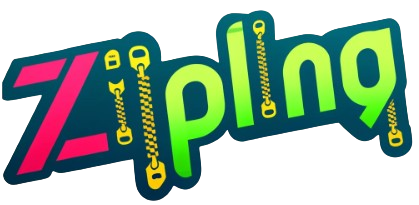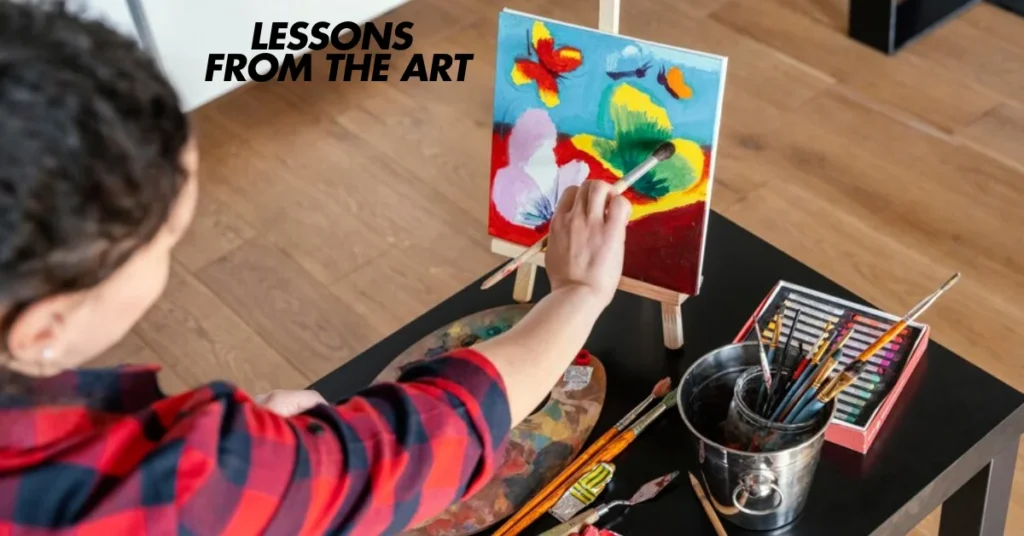Introduction to lessons from the art
Art has a magical way of speaking to us. It transcends words, resonating deeply within our hearts and minds. Through painting, music, dance, and various forms of expression, art teaches us invaluable lessons about life. These lessons can guide our journey in personal growth and self-discovery.
As we delve into the world of creativity, we uncover how it shapes not only artists but everyone who engages with it. The beauty of creativity lies in its power to transform challenges into opportunities for innovation. From historical masterpieces that defied conventions to everyday acts of creation that spark joy, the lessons from the art are everywhere around us.
Join me as we explore how embracing these artistic insights can enhance problem-solving skills, foster personal development, build confidence, encourage self-expression, relieve stress and promote mental wellness—all while cultivating a more vibrant daily life through creativity.
Historical Examples of Creativity in Art
Throughout history, art has been a mirror reflecting the creativity of its time. The Renaissance brought forth masters like Michelangelo and da Vinci, whose innovative techniques transformed painting and sculpture. Their work was not just about aesthetics; it pushed boundaries in human understanding.
In the 20th century, Picasso revolutionized visual language with Cubism. This movement broke traditional perspectives and opened new avenues for artistic expression. His boldness encouraged others to explore unconventional ideas.
Meanwhile, Frida Kahlo used her art as a personal narrative. Her vibrant self-portraits conveyed complex emotions while challenging societal norms regarding identity and gender.
These historical examples demonstrate how creativity in art serves as a catalyst for change. Each artist carved paths that inspired generations to think differently, proving that lessons from the art transcend mere visuals—they resonate deeply within society itself.
How Creativity Enhances Problem Solving Skills?
Creativity is a powerful tool for enhancing problem-solving skills. It encourages thinking outside the box and exploring unconventional solutions.
When faced with challenges, creative individuals often approach problems from different angles. This flexibility allows them to identify unique opportunities where others see obstacles. The process of brainstorming and ideation opens up pathways that traditional thinking might overlook.
Engaging in creative activities stimulates brain functions related to critical thinking and analysis. This mental exercise fosters adaptability, which is crucial when navigating complex situations.
Moreover, creativity invites collaboration. Working alongside diverse thinkers sparks innovative ideas that can lead to effective resolutions.
Embracing creativity cultivates resilience in problem-solving scenarios—transforming setbacks into stepping stones toward success.
Creativity as a Key to Personal Growth and Development
Creativity serves as a powerful catalyst for personal growth. It encourages exploration and pushes boundaries. When we engage with creative processes, we discover new facets of ourselves.
Trying out different artistic expressions can unveil hidden talents. Painting, writing, or music opens doors to self-discovery that often remain shut in our daily routines. Each stroke of paint or word on paper reveals layers of emotion and thought.
Moreover, creativity fosters resilience. It teaches us to embrace failure as part of the journey rather than an endpoint. Every misstep becomes a lesson learned, shaping our character along the way.
As we cultivate creative habits, we also develop adaptability. This flexibility spills into all areas of life—whether in relationships or career choices—allowing us to navigate challenges with greater ease and confidence.
Fostering creativity enriches our lives by creating pathways for continuous learning and evolving perspectives.
Overcoming Fear and Building Confidence through Creativity
Creativity serves as a powerful tool for overcoming fear. When we engage in artistic pursuits, we step outside our comfort zones. This can be exhilarating and intimidating at the same time.
Each brush stroke or musical note represents a bold choice. With every creative endeavor, we confront our insecurities head-on. We learn that mistakes are merely stepping stones toward mastery.
As we explore new techniques or styles, confidence grows organically. The act of creation becomes an affirmation of self-worth and potential.
Sharing our work with others further amplifies this growth. Feedback—whether positive or constructive—encourages us to take risks and embrace vulnerability.
In these moments of expression, fear begins to dissipate. Instead of being paralyzed by doubt, creativity invites exploration and playfulness into our lives. Through this journey, individuals not only build skills but also cultivate resilience against life’s uncertainties.
The Importance of Self-Expression through Art
Self-expression through art is a powerful tool for individuals. It provides an avenue to convey emotions and thoughts that might otherwise remain unspoken.
Art allows people to explore their identities, experiences, and aspirations. When you pick up a brush or pen, the world becomes your canvas; each stroke reflects a piece of who you are.
This form of expression fosters authenticity. It encourages vulnerability and honesty in ways that conversation sometimes cannot achieve. Sharing these creations with others can strengthen connections and build community.
Moreover, engaging in artistic pursuits can lead to healing. Many find solace in creating when faced with challenges—transforming pain into beauty through creativity.
Self-expression paves the way for personal discovery. Each artwork becomes a testament to resilience and growth, making it essential for emotional well-being and fulfillment.
Using Creative Outlets for Stress Relief and Mental Wellness
Creative outlets serve as a sanctuary for the mind, providing an escape from daily stressors. Engaging in art, whether painting or writing, allows individuals to channel their emotions into tangible forms.
These activities promote mindfulness. When immersed in creativity, one can momentarily forget worries and immerse themselves fully in the present.
Artistic expression also fosters emotional release. A brushstroke or written word can capture feelings that are often difficult to articulate. This cathartic process aids in processing complex emotions.
Moreover, exploring new creative endeavors boosts self-esteem and encourages personal exploration. Each creation is a step toward understanding oneself better.
By incorporating regular artistic practice into life, we create space for relaxation and rejuvenation. It becomes a powerful tool not just for individual expression but also for enhancing overall mental wellness through joy and fulfillment.
Cultivating Creativity in Everyday Life
Cultivating creativity doesn’t require grand gestures. It’s about embracing small moments in daily life.
Start by altering your routine. Take a different route to work or try cooking a new recipe. These simple changes can spark fresh ideas and perspectives.
Encourage curiosity by asking questions. Whether you’re exploring nature or browsing through books, let your imagination wander freely. Curiosity fuels creativity.
Engaging in creative hobbies is essential too. Paint, write, dance—whatever resonates with you. Allow yourself the freedom to experiment without judgment.
Surrounding yourself with inspiring people can ignite your creative fire as well. Join clubs or attend workshops that align with your interests.
Don’t shy away from mistakes; they often lead to unexpected discoveries and innovations that enrich your creative journey every day.
Conclusion: Embracing the lessons from the art
Embracing the lessons from the art opens a world of possibilities. By tapping into our creativity, we unlock new perspectives and solutions to life’s challenges. Art teaches us resilience; every brush stroke or note played is a testament to experimentation and growth.
As we explore various forms of creative expression, we find ways to connect with ourselves and others on deeper levels. Each creation tells a story—our story—and invites reflection, understanding, and empathy.
Making space for creativity fosters personal development. It encourages us to step outside our comfort zones, face fears head-on, and build confidence along the way. We learn that self-expression can be both liberating and healing.
Incorporating artistic practices into daily routines becomes essential for mental wellness. From doodling in a notebook to playing an instrument or even cooking creatively, these acts serve as vital outlets for stress relief.
Embracing creativity enriches our lives profoundly. By learning from art’s many lessons, we cultivate not just artistry but also joy—the greatest masterpiece of all.
ALSO READ: Teasemoonga: A Journey Through Flavor and Health
FAQs
What is “Lessons from the Art”?
“Lessons from the Art” refers to the valuable life insights we gain from engaging with creative processes like painting, music, and writing. These lessons foster personal growth, build resilience, and encourage self-expression.
How does creativity enhance problem-solving skills?
Creativity boosts problem-solving by encouraging out-of-the-box thinking, offering new perspectives, and fostering collaboration. It helps individuals approach challenges from various angles to find innovative solutions.
How does art contribute to personal growth?
Art aids in personal growth by promoting self-discovery, improving adaptability, and encouraging resilience. It helps individuals explore hidden talents and embrace failure as part of their development journey.
Can creativity help in overcoming fear?
Yes, creativity allows individuals to face their fears and build confidence. Engaging in creative endeavors helps people step outside their comfort zones, learn from mistakes, and grow through vulnerability.
Why is self-expression important through art?
Self-expression through art is crucial as it allows individuals to communicate emotions and thoughts in a raw and authentic way. It fosters connection, healing, and personal discovery, and encourages emotional well-being.






